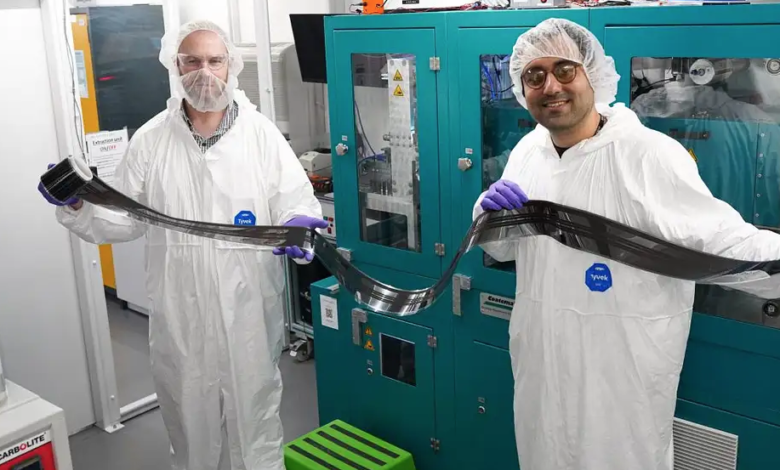The first solar cell in perovskite printed as a long roll

Made a photovoltaic film 20 meters long without the evaporation technique for electrodes
(sustainabilityenvironment.com) – The first solar cell in perovskite printed completely with the roll-to-roll technique. The merit of the work of SPECIFIC, the Swansea University research center in the United Kingdom. Here scientists have developed a special ink to overcome one of the most complex steps in terms of large-scale production: the manufacture of electrodes.
This is not the first time we have heard about perovskite photovoltaic cells printed, but until yesterday the term was misused. In fact, the printing process has never been completed. To create the gold electrode (normally used in this technology) a slow and expensive evaporation process is used, to be applied to the photovoltaic film once the printing of all the other layers is finished. The SPECIFIC team replaced gold with carbon ink.
“The key was to identify the right solvent mix,” says Dr David Beynon, Senior Research Officer at SPECIFIC. “The one that dries like a film without dissolving the underlying layer. X-ray diffraction analysis showed that carbon electrode ink is able to do this when formulated with an orthogonal solvent system (that is, it dissolves precise materials but not others). This innovative layer can be applied continuously and compatibly with the underlying layers at low temperature and high speed”.
Printed perovskite solar cell, 14% efficiency
The tests proved the initial intuition right. The single perovskite solar cell, molded with the carbon electrode, boasts photovoltaic performance similar to that of cells with gold electrodes: has a conversion efficiency of 14 percent, It outperforms at higher temperature levels and possesses better long-term stability. The team also produced a long photovoltaic roll through the roll-to-roll, printing it directly onto a 20-meter-long flexible substrate. The coil showed a final efficiency of 10.8 percent.
“The next challenge for us at Swansea University is to show people that printed PV works,” added Professor Trystan Watson, head of solar research. “To achieve this, we need to start making something that really looks like a panel”. The research was published in Published on Advanced Materials.





